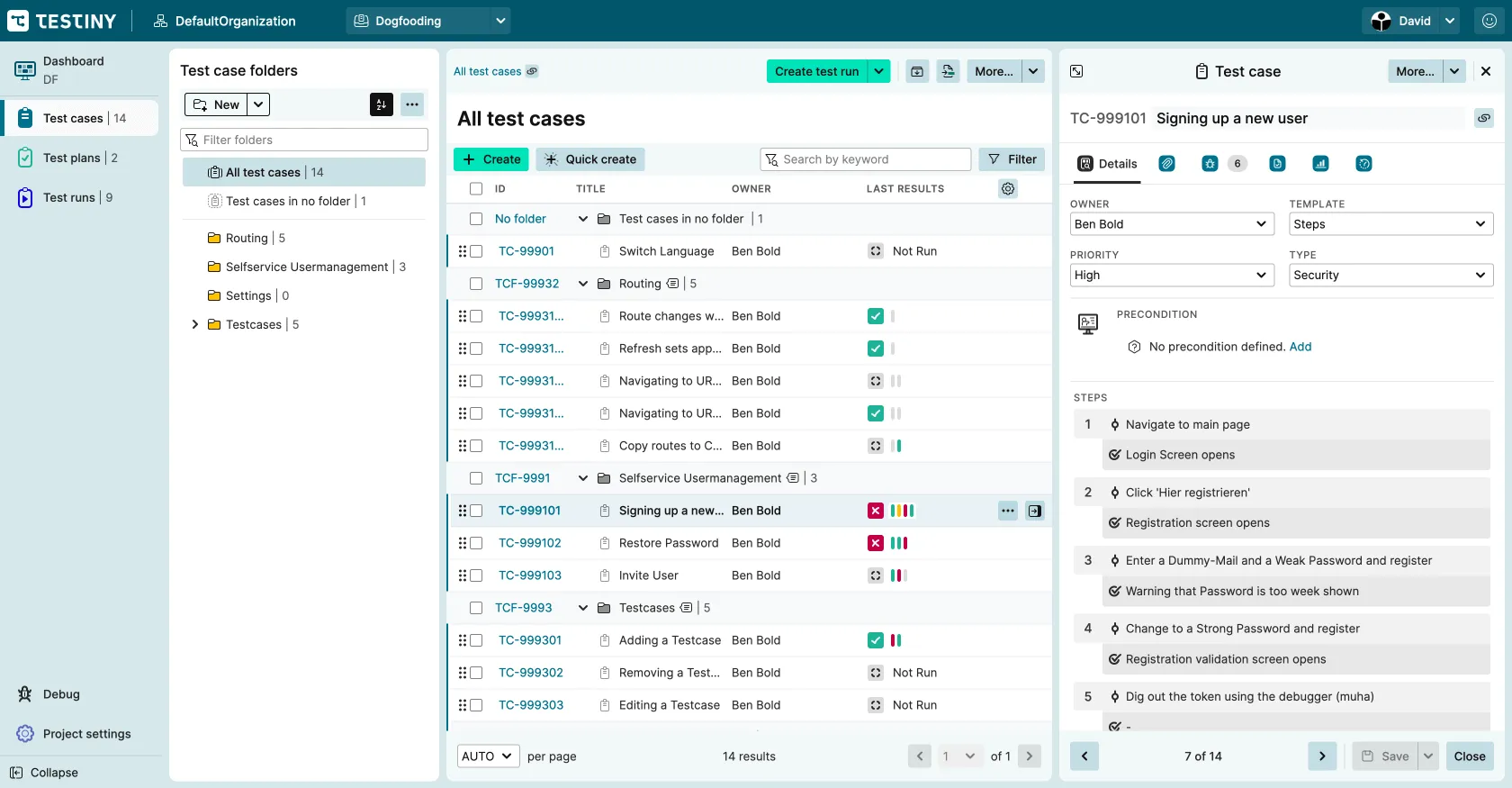Manual test case templates vs. test management tools
Efficient test management is crucial for effective software testing. While manual templates in spreadsheets or documents have been widely used, modern tools like Testiny offer advanced features for collaboration, automation, and traceability.

Why is Testiny better than manual test case maintenance?
This comparison highlights how Testiny addresses the limitations of manual templates, improving testing processes and software quality.
1. Centralized management
• Testiny: Provides a centralized platform where all test cases, results, and associated data are stored
and easily accessible to all team members in real-time.
• Manual templates: Often involve scattered files across various systems, leading to version control
issues and difficulty tracking updates.
2. Collaboration
• Testiny: Supports collaboration through shared access, real-time updates. Team members can comment,
review, and assign tasks seamlessly.
• Manual templates: Collaboration is manual, often requiring
file sharing, email threads, or cloud storage solutions, which can lead to inefficiencies.
3. Automation and integration
• Testiny: Integrates with tools like Jira, CI/CD pipelines, and other project management systems, enabling
automated updates and streamlined workflows.
• Manual templates: Lack integration capabilities,
requiring manual effort to sync with other tools or update status in multiple locations.
4. Test execution and reporting
• Testiny: Facilitates test execution directly within the tool, automatically logging results and generating
reports with insights into test coverage, success rates, and issue trends.
• Manual templates: Test execution must be recorded manually, and creating comprehensive reports often
requires additional effort in extracting and analyzing data.
5. Scalability
• Testiny: Designed to handle large test suites with advanced search, and filtering capabilities. It's
easy to manage thousands of test cases efficiently.
• Manual templates: As the number of test
cases grows, managing them becomes cumbersome, error-prone, and time-consuming.
6. Traceability
• Testiny: Links test cases to requirements, bugs, and other artifacts, providing clear traceability
for audits and quality assurance processes.
• Manual templates: Establishing and maintaining traceability
manually is tedious and prone to gaps.
7. Error reduction
• Testiny: Automates many repetitive tasks, reducing the risk of human error in documentation, execution,
and reporting.
• Manual templates: Susceptible to human errors, such as overwriting data, missing
steps, or forgetting updates.
8. Time efficiency
• Testiny: Automates repetitive tasks, offers reusable templates, and enables rapid updates, saving
significant time.
• Manual templates: Require manual effort for updates, duplication, and revisions,
making them time-intensive.
9. User experience
• Testiny: Has an intuitive UI, with features like drag-and-drop, dashboards, and customizable workflows
tailored for testing needs.
• Manual templates: Depend on the capabilities of tools like spreadsheets
or word processors, which may not be user-friendly for managing complex test cases.
10. Compliance and audit readiness
• Testiny: Automatically maintains logs, version histories, and test execution records, ensuring compliance
with industry standards and simplifying audits.
• Manual templates: Require meticulous manual
record-keeping, which can be challenging and time-consuming.
Summary
In summary, while manual templates may suffice for smaller projects or teams with minimal testing needs, tools like Testiny significantly enhance productivity, accuracy, and scalability for more complex projects or teams focused on quality assurance.
Discover more test management features

Level up your testing game.
Start using Testiny today.
Free 14-day trial available. No credit card required.